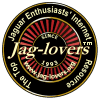| |||||||||||
| |||||||||||
 Tire SizesI'm not going to address brands or specific products. Others will if asked. I will also not describe the numbering system except to say that the first number is width in centimeters, the second the ratio, as a percentage, of sidewall height to width, and the last is the diameter of the wheel it fits. If you want your odometer and speedometer to be fairly accurate, then you must keep the overall tire and wheel combination diameter (rolling radius) in the 26 - 27 inch range. Following this number sequence is a letter that reflects the ability of the tire to survive the stresses of speed for an extended period. (I think that the extended period is about 30 minutes but I'm not certain.) I have read that higher speed rated tires are more responsive because they have stronger sidewalls. I do know that your owner's manual will tell you to inflate to 33 front and 32 rear, or if fully loaded (including luggage of 904 lbs) then 33 lbs front and 36 lbs rear, if you plan to drive at speeds above 100 mph. Here is the newest system of speed ratings.
Rating MPH
R..........106
S..........112
T..........118
U..........123
V..........149
W..........168
Y..........187
Z..........187+
Note that old Z rating was 149 or above, now 187 or faster.
Speed rating means that the tire has exhibited its ability
to withstand that speed for an extended period without failing.
Based on comments I've read. You can use tires from 205 70 15 to 235 60 15. All else being equal: wider tires give better grip on dry pavement and more narrow tires provide better traction in snow; high aspect tires give a more comfortable ride and low aspect tires better support aggressive cornering. My personal opinion is not worth much, but I recommend that you buy speed rated tires, even if you only exceed 100 mph rarely, and that you buy tires with A traction ratings. Here is what I now have regarding the XJ with 15 inch wheels. Recognizing that there were likely marketing differences by country and that I'm relying on a book called Hollander Wheels Identification and Interchange Manual, here are the dimensions of wheels used. Until the XJ40 in 1988, the XJ6 used a 15x6 wheel. Original tire sizes were 205/70 or, optionally, 215/70. From 1988 to 1993, wheels were 15x7 (various slotted alloys) or 15x6.5 (diamond spoke). The recommended tire size for the XJ40 was also 205/70. The wheels from more recent cars will fit older cars but the reverse my not be true because of ABS braking component differences. Also, the wheels from XJSs fit XJ6s. It is also unfortunately true that Chevy wheels will fit the lug pattern but you will need to be careful to correct for Jag offset (difference between wheel's true centerline and the face with the lug nut holes measured from the back I think). If my computations are correct, here are tire widths and total diameters for various 15 inch alternatives and speed relative to a 215/70 at 70mph. (I'm not saying that the 215/70 will give the most accurate reading. I don't know.)
If correct, then both the 205 and 215 tires have been used on 6, 6.5, and 7 inch wide wheels. Or in other words, the range has been from an 8.4 inch wide tire on a 6 inch wheel to an 8 inch tire on a 7 inch wheel. Using the XJ6's 215/70 on a 6 inch wheel as a limit, an owner so inclined could put 235/60's on a 7 inch wheel or 225/65's on a 6 1/2 inch wheel. Jan Wikstrom reports that he uses 235/60s on his XJC and that doing so required very little modification to the rear wheel arch and a slightly reduced turning radius. Others have reported successful use of 235/60s but that size is apparently the limit and the physical size of individual tire models does vary somewhat. Last comments: Total rolling diameter probably has a greater impact on visual appeal and other considerations than on speedometer accuracy (about 3 mph at 70 from largest to smallest listed). Also, there is much better selection for some sizes than others. For example, there are many 215/65's and few 215/70's. And last, I understand that Vicarage runs 225/55s on 16 inch wheels (diameter of 25.7 inches).
|
|
| ||
 |
Improve your Jag-lovers experience with the Mozilla FireFox Browser!
©Jag-loversTM Ltd / JagWEBTM 1993 - 2024 All rights reserved. Jag-lovers is supported by JagWEBTM For Terms of Use and General Rules see our Disclaimer Use of the Jag-lovers logo or trademark name on sites other than Jag-lovers itself in a manner implying endorsement of commercial activities whatsoever is prohibited. Sections of this Web Site may publish members and visitors comments, opinion and photographs/images - Jag-lovers Ltd does not assume or have any responsibility or any liability for members comments or opinions, nor does it claim ownership or copyright of any material that belongs to the original poster including images. The word 'Jaguar' and the leaping cat device, whether used separately or in combination, are registered trademarks and are the property of Jaguar Cars, England. Some images may also be © Jaguar Cars. Mirroring or downloading of this site or the publication of material or any extracts therefrom in original or altered form from these pages onto other sites (including reproduction by any other Jaguar enthusiast sites) without express permission violates Jag-lovers Ltd copyright and is prohibited |
 |